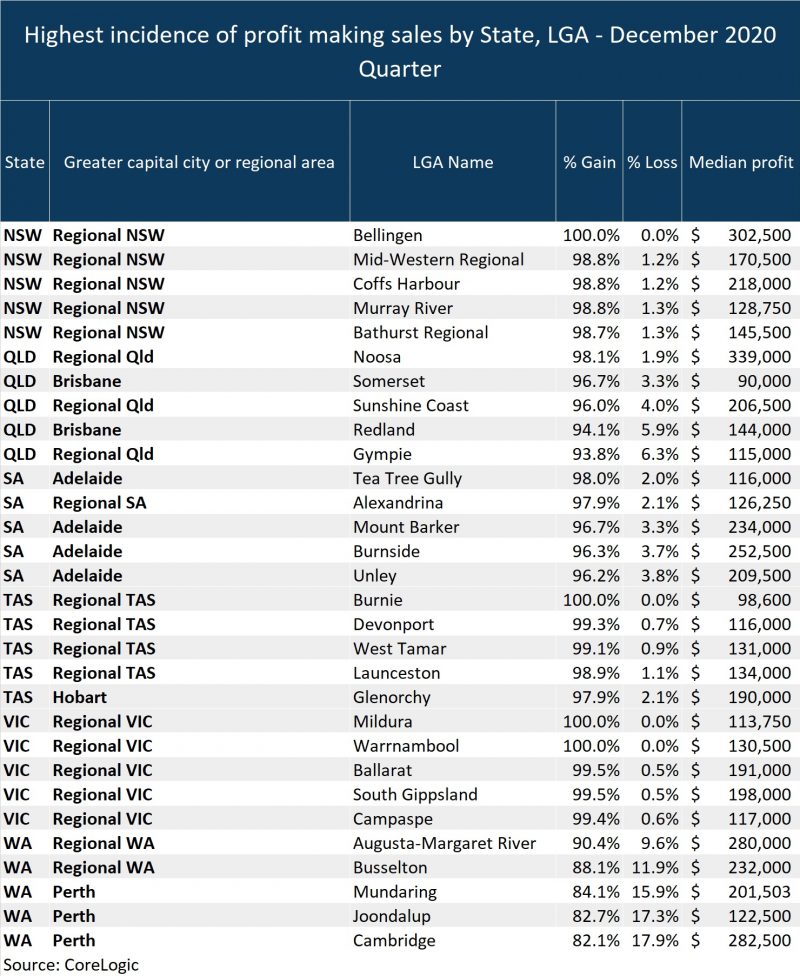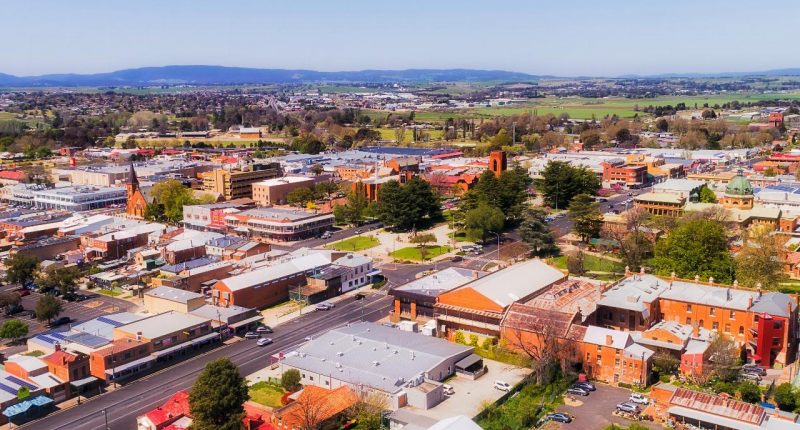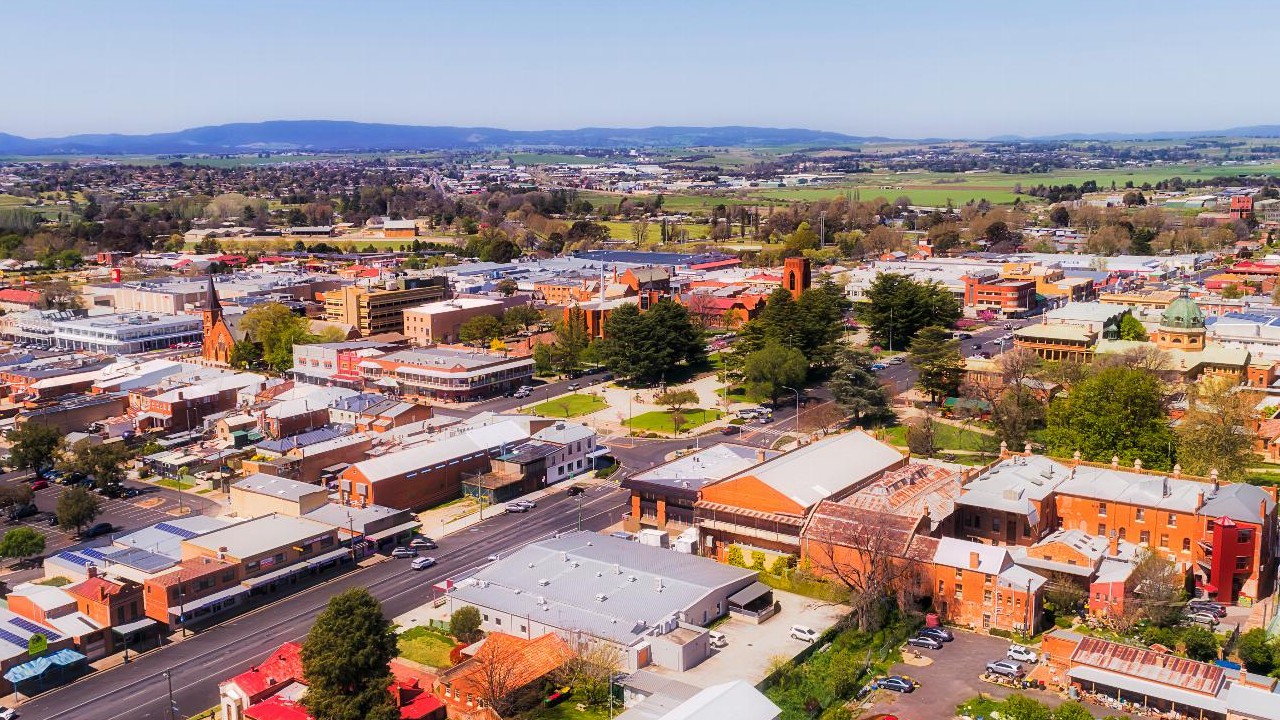- Nearly 90 per cent of Australian home sellers turned a profit in the December 2020 quarter as property prices continue to surge across the nation
- Based on observations in a recent CoreLogic report, 89.9 per cent of sales saw a nominal gain through the December quarter, up from a recent low of 87.4 per cent in the three months to June
- The median profit on resales across Australia through the December quarter was $230,000, up from $200,000 in the previous quarter
- Owner occupiers generally enjoyed higher incidences of profit at 92.2 per cent, compared to investors at (84.9 per cent)
- The most profitable areas across NSW and Victoria were all in regional markets, including non-coastal regional centres such as Bathurst, Mildura and Ballarat
Nearly 90 per cent of Australian home sellers turned a profit in the December 2020 quarter as property prices continue to surge across the nation.
The good news comes from CoreLogic’s latest ‘Pain and Gain’ report, which analysed 98,000 sales through the December quarter.
Based on the observations, 89.9 per cent of sales saw a nominal gain through the December quarter, up from a recent low of 87.4 per cent in the three months to June.
The median profit on resales across Australia through the December quarter was $230,000, up from $200,000 in the previous quarter.
Owner occupiers generally enjoyed higher incidences of profit at 92.2 per cent, compared to investors (84.9 per cent).
“As property values rose across each state and Territory through the December quarter, buoyed by a cash rate reduction through November, the value of profits also increased substantially,” CoreLogic Head of Research Eliza Owen said.
“Total gains from resales in the December quarter rose to $31.9 billion, up from $24.8 billion in the previous quarter. Combined losses from resales also shrank from $1.2 billion to $1 billion from the September to December quarter.”
The increase in profitability coincides with a turn in housing market performance across the country, with the report highlighting some usual market trends.
The portion of properties sold at a loss among houses fell from 9.3 per cent in the three months to September to 7.3 per cent, while the portion of loss-making unit sales fell from 19.6 per cent to 18.7 per cent.
However, looking at the highest rates of profit-making sales at the Local Government Area (LGA) level highlights other recent trends in housing demand.

Of the top five LGAs within each of the major states, 20 out of the 30 are located within regional areas of Australia.
That said, only LGA regions with a minimum of 100 sales were analysed.
The most profitable areas across NSW and Victoria were all in regional markets, including non-coastal regional centres such as Bathurst, Mildura and Ballarat.
This coincided with quarterly growth rates in the December quarter of 3.5 per cent in Bathurst, 4.5 per cent in Mildura, 3.4 per cent in Ballarat, as well as a broader uplift in affordable, regional centres of NSW and Victoria through much of 2020.
The lowest incidence of profit-making sales across the capital cities was in Darwin, where 51.4 per cent of properties sold for a loss.
As prices continue to rise across the Australian housing market, CoreLogic expects that the proportion of profit-making sales will follow suit but cautioned that extraordinary events can quickly change the outlook for profitability in real estate.








